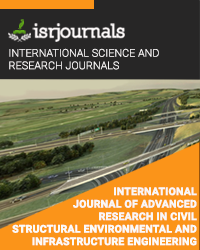translucent concrete
Gnanamanoj.B ,Priya.KV
Published in International Journal of Advanced Research in Civil,Structural,Environmental and Infrastructure Engineering and Developing
ISSN: 2320-723X Impact Factor:1.7 Volume:3 Issue:1 Year: 31 March,2017 Pages:459-464

Abstract
The concrete currently used in the construction industry generally consists of at least cement, water and aggregates (fine or coarse). As is well known, traditional concrete has a greyish colour, and its high density prevents the passage of light through it, which means that it is also impossible to distinguish bodies, colours and shapes through it. As can be imagined, concrete with the characteristic of being translucent will permit a better interaction between the construction and its environment, thereby creating ambiences that are better and more naturally lit, at the same time as significantly reducing the expenses of laying and maintenance of the concrete. Along with the translucent characteristics, the paper confines its area towards the reinforcement method of this type of concrete such that they can be practically implemented as a load bearing structure. This new kind of building material can integrate the concept of green energy saving with the usage self-sensing properties of functional materials.
Kewords
Translucent, Reinforcement, load-bearing
Reference
[1].Panos J. Antsaklis and Kevin M. Passino. An introduction to intelligent and autonomous control. [2].Ea Stokoe. Reeds Naval Architecture for Marine Engineers. [3].PID tutorial using LabVIEW. [4].Thor I. Fossen, John Wiley. Guidance and Control of Ocean Vehicles. 4 Norway, 1994 [5].Masmitja et al.Development of a Control System for an Autonomous Underwater Vehicle. IEEE Proceedings. [6].Khac Duc Do and Jie Pan. Control of Ships and Underwater Vehicles. [7].G.N. Roberts and R. Sutton Advances in Unmanned Marine Vehicles.. [8]. Sabhia Wadoo and Pushkin Kachroo. Autonomous Underwater Vehicles, Modeling , Control Design and Simulation. [9].Gianluca Antonelli. Underwater Robots, Motionand Force Control of VehicleManipulator Systems. [10].Panos J. Antsaklis and Kevin M. Passino, An Introduction to Intelligent and Autonomous Control.

